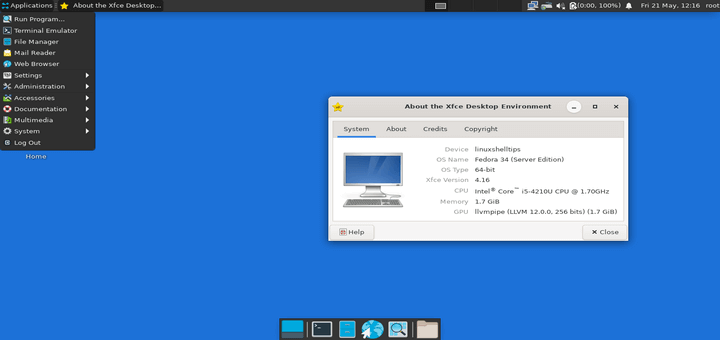


- #Ubuntu vs fedora workstation for free#
- #Ubuntu vs fedora workstation full#
- #Ubuntu vs fedora workstation software#
- #Ubuntu vs fedora workstation Pc#
#Ubuntu vs fedora workstation software#
You also get software for running servers, compiling software or alternative Webbrowsers. Thus you get a big choice of apps you can try on Fedora, including alternative Desktops like the fast XFCE4 or the ultra-popular KDE. It is up to the user to decide who the personal winner is, but in this review, this is a draw.įedora ships with 5 CDs, Ubuntu with one.
#Ubuntu vs fedora workstation for free#
Ubuntu will ship them to you for free if you cannot afford them and you can also get a live-CD, something that is not in stock for Fedora, but Fedora is (opposed to Ubuntu) available in shops in the “Red Hat Magazine” which features stable Fedora versions with patches included. Ubuntu uses only one CD, which is somehow more “user-friendly” but we will discuss this later.įor both systems, there is the alternative of ordering the distros online. This is especially true for Fedora, which ships with four CDs plus a rescue-CD. But unless you have broadband, downloading might be a pain. How do you get the Systems? Both Ubuntu and Fedora are available via download. The second machine is a ESC 1,8 Ghz TM5800 processor notebook with 256 MB Ram and a 30 GB harddisk, a 64 MB Nvidia graphics card, a DVD-burner and again a Realteck network card plus a WLAN card that will not be used in this test, because there was no wireless Router available for this test. Network Connection is a Realteck 10/100 Ethernet card, connected to the ultimate test: a not so easy D-Link DSL 564t-Router.
#Ubuntu vs fedora workstation Pc#
I will test these distributions on the following machines: A 1,2 Ghz AMD Desktop PC with 512 MB Ram and a 40 GB harddisk, 16 MB ATI Mach64 Rage II graphics, Samsung 76E Monitor, and a CDROM drive and CDROM burner, both from Samsung. Bluecurve for Fedora and Human for Ubuntu. Also, both use kernel 2.6.8+ and have their very own theme for the default desktop. Why these two? Because both feature Gnome 2.8 and it would not be a comparision on equal terms to compare Gnome to e.g KDE. This critical review will deal with two long awaited Linux-distributions, Fedora Core 3 and Ubuntus Warty Warhog. There are wild discussions, if Linux-Distributions are ready for serious business work or personal use. Not only servers but also on the desktop pc and notebooks.

You don’t mention these things just show how bias you are towards Ubuntu.Linux distros are advancing everywhere. If you want a distro that doesn’t respect its community, has a close source project that is forcing towards its userbase then you can choose Ubuntu.
#Ubuntu vs fedora workstation full#
When you say “Ubuntu has possibly one of the best documentations compared to all other Linux distros” are you kidding? Have you ever look into Arch Wiki? They have such amazing documentation that even other distro forums refer to then.īotton line, if you want to use a better version of Ubuntu that is community-driven and doesn’t have all this snap bullshit and listen to the community go with Pop OS! If you want bleeding-edge Linux with rock-solid stability and is full community-driven goes with Fedora. If this wasn’t enough canonical is forcing the use of snap towards its users. Snaps to this day are much more unstable than flatpaks. Snaps is a closed source project, controlled by canonical, flatpack is open source and, like all things Fedora community-driven.

In your text, you conveniently forgot to tell that Fedora is migrating (incentivizing the use of) towards FLATPAKS while Ubuntu is using SNAP. YES, Fedora is bleeding edge, but TODAY is much more stable than Ubuntu, and if you don’t believe me just go read some of the comments on the Reddit community on both distros. Sorry to say, but this text is so bias for you choose Ubuntu that is a disservice to the community.


 0 kommentar(er)
0 kommentar(er)
